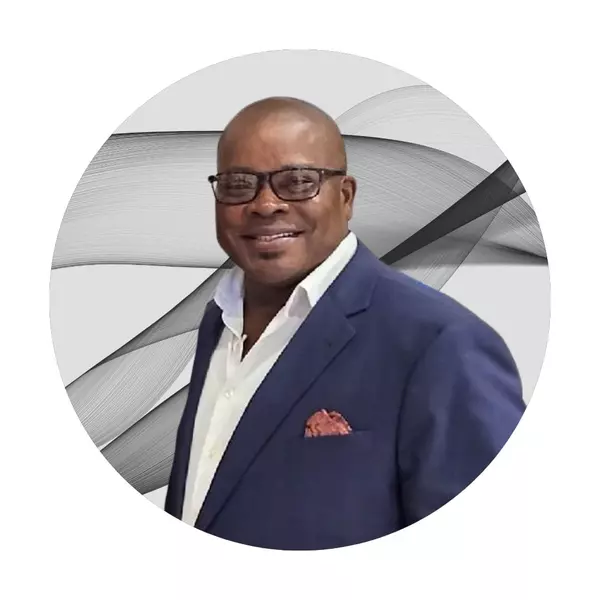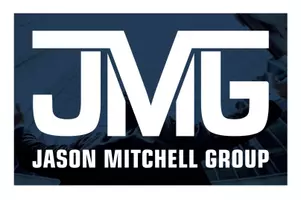Her love of ‘what if’ stories turns into reality of publishing the way she and her friends kept talking about
Sure, reading is exciting and wonderful, but it wasn’t enough for a young Jasmine Walls — she needed to read every book she got her hands on, and to do that, she was determined to get faster.
“As a kid, I remember I was frustrated because I wanted to read more than I was. I was like, ‘I’m reading too slow.’ We had this little tiny closet that we used as a library, and I would just close the door, sit in there, and teach myself how to read faster,” she says. “I wanted to read all the books that were in there. … We had a whole collection of, maybe, 20 of these short ‘Winnie the Pooh’ stories, and I would pick one at a time, read it, and time myself. I was like, ‘Too slow.’ Then, I’d go to the next one and try to read it faster.”
That was how much she loved stories, both reading them and creating her own to share. When she was deciding what to study after high school, she chose culinary school and spent the subsequent decade or so as a baker and pastry artist. Loving both baking and comics, the baking took the front seat in her professional life until a little more than 10 years ago when she began seriously working on and building her portfolio as a comics creator.
“I loved baking, and I threw myself into it 100%, but I’ve always loved storytelling and sharing stories,” she says. “When I started winding down my baking career a bit, I really felt the draw to kind of go back to comics and tell those stories that I’d sort of put aside, or have worked on in private, for myself. I thought, ‘Maybe I could do this as a career again.’”
After years of fine tuning her work and being recognized by the American Library Association, the 2023 Virginia Library Association’s Graphic Novel Diversity Award, and independent publishing awards, she started her own publishing company earlier this year — Bonedust Press. Her company publishes illustrated novels and novellas focused on speculative and genre fiction, and was born out of a frustration with the traditional publishing model in how payment and royalties are distributed to creators. Part of her mission is to pay writers and artists from the very first sale of their books, and to use a portion of sales to contribute to needs in her community, such as donating to food banks.
Walls, 35, describes herself as “an author, editor, (and) hot chocolate enthusiast” who lives in Mission Valley with her dog, Mousse, after moving to San Diego five years ago to be closer to her mom and siblings. She talks about her vision for Bonedust, and her love for telling stories.
Q: What were some of your favorite stories and books as a kid?
A: I always loved things like fairy tales and folklore, and I was always drawn to that. One of my favorite books-and one of the books that I think genuinely defined me as a writer and as a reader-was “Her Stories: African American Folktales, Fairy Tales, and True Tales,” which were Black folk tales from the south by Virginia Hamilton. They had these gorgeous illustrations by Leo and Diane Dillon. She also did “The People Could Fly” and a few other books; I’m pretty sure I read those until they fell apart because I had to buy new copies. Also, I’ve always been a big fan of fantasy and Patricia C. Wrede’s “The Enchanted Forest Chronicles” dealing with dragons and stuff. Oh, I was obsessed with that.
Q: How did you go from baking to publishing?
A: That’s a winding road. I love baking, I had a great time, I went to culinary school, I got into kitchens and then my knees weren’t as happy as I was standing in a kitchen full time. Eventually, I pulled back a bit and decided to go back into writing comics, which is not an easy thing to do when you’re brand new on the scene and you’re often a little older than a lot of the people who’ve been doing this since they were in their teens. I decided to work really seriously on building a portfolio, so there’s kind of a gap. I started writing comics seriously in about 2013 or so, but my first book wasn’t published until about 2018; the five years in between was me just really working hard on publishing small comics on a website and building a portfolio, making friends in the industry, and just building that organically in a way that I could still work on the side, but do this and take it seriously. After a decade, I’d built up my portfolio, I started putting out books for publishers, and now that I’ve sort of established myself pretty well, I realized that there are some flaws that myself and several other folks who work in the same industry were seeing from publishers: how unsustainable it could be unless you were a really big name. I realized I could just keep complaining about this over and over again, or I could try and do something different. I chatted with some other small publishers to get a feel for what it would take, waffled back and forth on if I wanted to commit to it, and finally just said, “I gotta do this. I gotta give it a try. If I’m going to be mad at publishing, I might as well see if I can do something different.” So, Bonedust Press became this experiment on whether I can do this in a better, more sustainable way for writers and artists.
What I love about Mission Valley…
I’d say it’s a mix of having this quiet neighborhood where I can work from home and there’s not a lot of loud traffic or yelling or anything. It’s nice, quiet place to walk and live and work, but it’s also close to transit. I love to take the trolley. I’ll take the trolley to Old Town, I’ll take it to go shopping, I can get to all the fun places I need to get to without being stuck in traffic. I can knit, I can chill out, I can read a book; I don’t have to worry about driving.
Q: What was upsetting you that made you want to start your own company?
A: I love publishing, I love the publishers I’ve worked with, but across the board, there are just ways that traditional publishing tends to be very slow. If you’re working in comics, or writing as an author, or an artist, it’s not a steady paycheck or anything. You might get a really good deal one year, and then several years after that, it’s a bit dry, so it’s not the most sustainable work. On top of that, the way that royalties are set up is a little tough because you may get a nice, big advance that covers half a year of your pay, and that seems great on paper, but in order to get royalties, you have to pay off that entire advance. Unless your book does really well, you may never see another penny from that book, even as the publishers are selling it and making money from the book. That’s something that myself and several other creators disagree with, so I thought, what can we do differently? I can complain about this and complain about this, but if nothing changes, then we’re just complaining and nothing is getting better. I was like, ‘What if I started the press and tried a different method where the writers and artists of these books get royalties from the very first sale while also being paid in advance?’ I developed a different royalty system, which I’ve sort of built on my website so that people can look it over and get a sense of it. We have a sort of sliding scale of those royalties, where we pay off that advance. All of the authors and the artists are still getting paid in the meantime, and then as soon as the whole advance is paid off, that royalty amount increases, so everybody benefits.
Q: Why the name “Bonedust”?
A: Anyone who’s met me or been around me for any length of time knows that I just I love skeletons. They’re just such a fun motif. I’m a sucker for memento mori. If you’ve ever seen those old graves with the skulls with the wings on them — a lot of them are in the Northeast — I just think they’re such fun iconography. So, when I was coming up with how to brand this business, and what sort of name did I want, what sort of visual icon did I want? That’s what kept coming back to me. It’s also just a unique, memorable name. It sort of reminds you that death is a part of life. It’s all a cycle, but it also tells you to sort of live life to the fullest.
Q: Talk about your decision to focus on speculative fiction.
A: When it comes down to it, I just really love speculative fiction, I love fantasy, I love sci-fi, I love genre fiction. I feel like, sometimes, readers who are used to literary or nonfiction think that genre fiction is more childlike or lesser (quality); that’s not true at all. It takes so much effort to build a world, especially one that’s compelling, one that’s interesting, one that captures people. I think it really shows readers how universal the human experience is, even if what you’re reading about is nothing like the world we live in. That’s what I love about it, so I knew when I opened the press that that’s what I wanted to focus on.
Q: Your company’s debut novel is your own, “The Traitor & The Wretch”? Tell us about this book.
A: As I said, I love thwarting classic tropes as much as I love embracing them, and this is sort of your classic, sword and sorcery fantasy, but seen from the eyes of two side characters. The story opens after the main story has ended, the big evil has been defeated, the hero has now become the king, and then we have these two minor villains. One of them tried to backstab the hero, the other one helped raise the terrible, evil god that the hero had to defeat. Now, everyone wants these two guys dead, so the story is about how they have to survive. They go on the run, but everyone in the kingdom wants them dead, so they have to figure out how to get out of this place and how to trust each other. The story is this very grim, gritty, fantasy adventure, but it’s the backdrop for this romance that slowly takes place if they were to trust each other.
Q: Walk us through your creative process with this book? How did you conceive of the characters and the story? What was the collaborative process with the illustrations?
A: I knew from the beginning, especially as we started Bonedust Press, as well as this book, that I wanted illustrations. I love illustrated books, it’s what I grew up on, and I miss it. I feel like adults miss out on that. It’s like, after middle grade, most books aren’t illustrated, anymore, especially when it comes to speculative fiction like fantasy. It’s so nice to get those cool illustrations in there. When I was coming up with this story in particular, it actually started as a joke. I posted on social media about how I was tempted to try a sort of romantasy style story, but with the least likable archetypes. The sort of nameless, greasy, little cowardly cultist who just died; they’re there to be killed. Or, you have this sort of angry, traitorous second-in-command who’s a bit of a meathead, and the only role he has is to sort of make the hero look better. It seemed like a really fun challenge, and then it just sort of hooked me and never let go. I just began writing, and the more that I wrote, the more I fell in love with the story. I just had to do it. I worked with Rowan MacColl, who I’ve been a big fan of for years. She also made comics and illustrations and her work’s gorgeous; I knew it would be the perfect fit for this gritty, grimy backdrop that has a fairytale energy. I was really happy when she agreed to work with me, so this is definitely a dream project for me.
Q: What is the best advice you’ve ever received?
A: This goes all the way back to like my college days working in culinary, but it’s worked all the way up until now: slow and steady. You’ve got to go slow and steady. Take those risks, but don’t ruin yourself on them. For me, especially in a business sense, that means to go out there, do something innovative, but don’t ruin yourself doing it. My goal has always been to run a sustainable business; I’m not trying to run myself in the red. I want to put out books and I want to be able to pay people. I feel like there are so many stories about people who try to do too much too fast. They’ll try and put out 10 books in a year, and then suddenly they’re buried in debt and they can’t pay their creators, and everybody’s unhappy. I never wanted that. I want people to be able to trust the books I’m putting out, and if that means I only put out a book a year, so be it. It’ll be one really good book.
Q: What is one thing people would be surprised to find out about you?
A: That’s a tough one, I’m a pretty open book. I think, in the publishing world, people are kind of surprised that I have this long history in the baking world. Or, maybe that I once went to golf camp when I was 11. I’m not a fan of golf at all.
Q: Please describe your ideal San Diego weekend.
A: I’m really easy to please — maybe a nice walk along the Shelter Island marina, with a nice, long walk along the water. Taking friends for lunch at Liberty Station, to the food hall there because everyone’s going to find something they want. I go there all the time and they’ve got little picnic areas. Or, maybe hot chocolate from Nibbles in Old Town, and then just browse the stores. I love food from other places, especially if it’s historical, local, cultural; I’m a sucker for that.
Categories
Recent Posts










GET MORE INFORMATION


